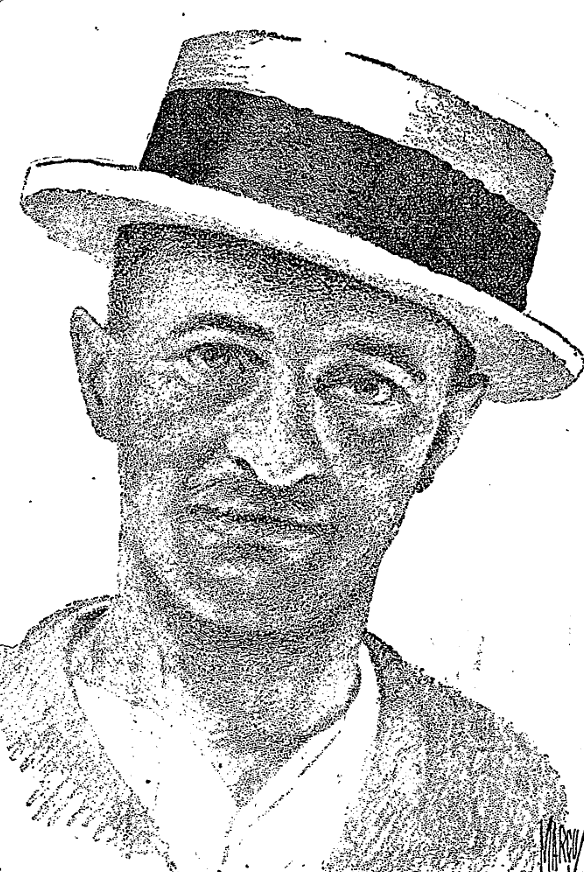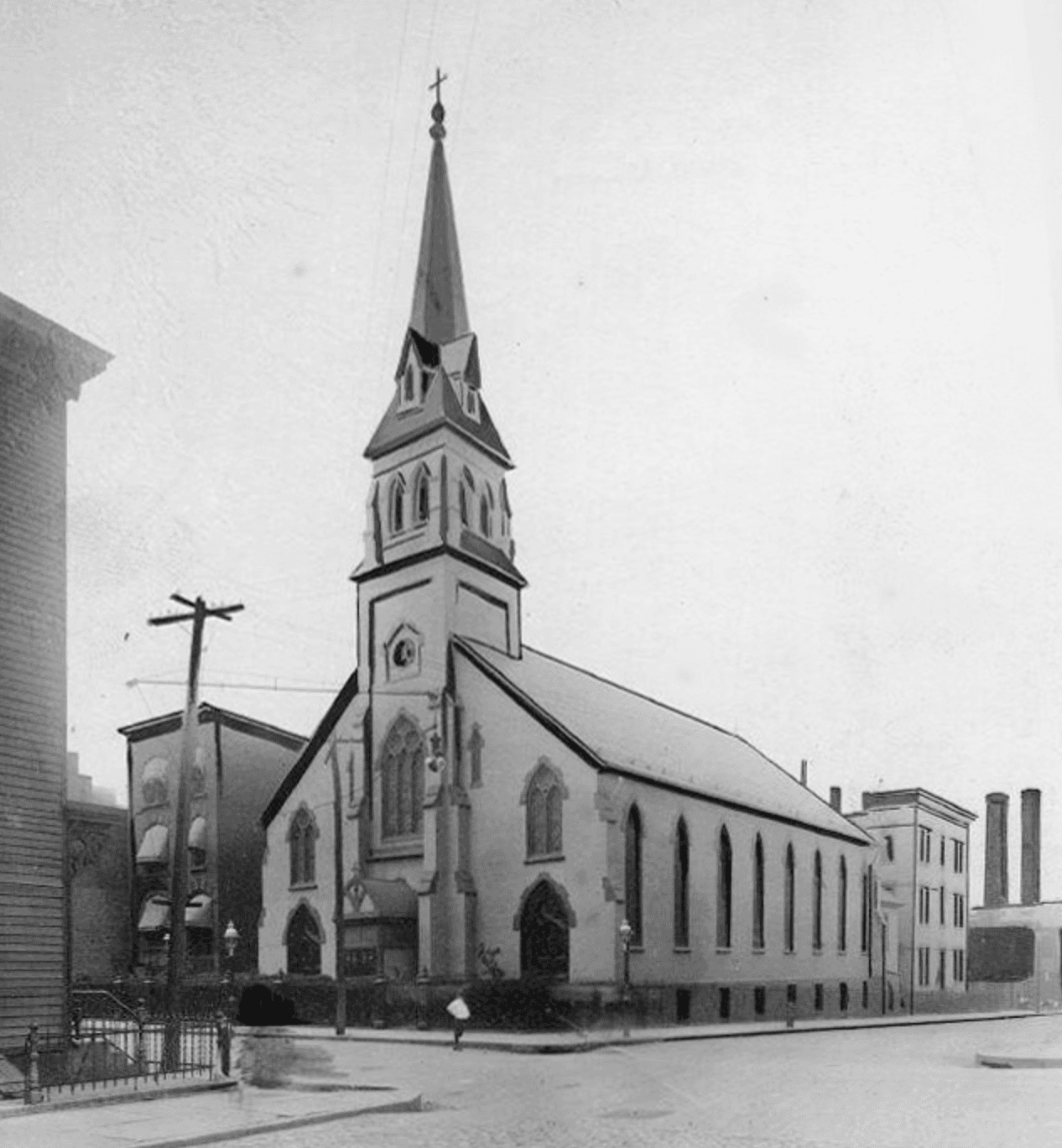The quaint streets of Vinegar Hill, nestled between the Brooklyn Navy Yard and the Manhattan Bridge, feel more like the streets of some small, tranquil New England village than part of nearby crowded, high rise Downtown Brooklyn Historic narrow Belgian-style blocked streets lined with two-story Federal and Greek Revival row houses and hip bistros contribute to the enclave’s village vibe. Today, it is a fashionable area where the real estate fetches huge sums, but for many years it was the home of Brooklyn’s Irishtown, and the first area Irish immigrants settled in large numbers in Brooklyn.
Vinegar Hill was the ancestral home to the Canarsie Native Americans who sold a piece of waterfront land in Brooklyn that included the area to Joris Rapelje, a European settler in Dutch New Amsterdam His descendants, however, chose the wrong side in the revolution and the Rapelje family lost the land, which was purchased by speculators called the Sands brothers who had the area surveyed into lots. In 1800, merchant and developer John Jackson bought the easternmost portion of the Sands property and built a small shipyard and housing for workmen. He named the area Vinegar Hill after the last battle of the Irish Rebellion of 1798, hoping to lure recently arrived Irish shipwrights who lived across the East River in Manhattan. A few Irish bought some of Jackson’s lots and began to settle the area. Jackson’s heirs sold all his holdings to developers who in the 1820s and ’30s built pretty Greek Revival style houses that today are landmarked.
Another wave of Irish immigration swept into Vinegar Hill in the 1840s. These newcomers were half-starved Famine survivors who had come over on the “coffin ships.” In January of 1847, these emigrants infected the area with ship fever, which broke out on Hudson Avenue and lasted for two years. Cholera also claimed lives in the area. Though Vinegar Hill was far from the largest Irish settlement in the city, it became one of the most notorious, and soon, everyone was calling it Irishtown. Newspapers described the area as a slum where shacks swayed with the wind and often crumbled into the dirt roads.
John Jackson was also a visionary shipbuilder who foresaw that Brooklyn would become a center of ship building. In the first years of the 19th century, Jackson sold 40 acres to the United States government for the Brooklyn Navy Yard, where many of the great American battleships and aircraft carriers would later be built. The impetus to buy land for the shipyard came from the “father of the American Navy,” Wexford-born Commodore John Barry who wrote a letter to the War Department in 1798 urging the establishment of a permanent navy yard in Brooklyn. Commodore Barry Park, just across the street from the Navy Yard on Flushing Avenue honors the Irish naval hero.
New York’s Democratic machine Tammany Hall soon gained control over hiring in the yard and rewarded thousands of loyal Irish supporters with jobs there. Brooklyn’s infamous corrupt 19th century boss, Hugh McLaughlin, the son of Donegal immigrants, rose to become the king of the Brooklyn Democratic Party thanks to his position as a master foreman with hiring powers in the navy yard. “Go and see Hughey” became a familiar phrase to Irish immigrants seeking work in the Navy Yard.
Generations of Irish Americans toiled at the Navy Yard, including editor and novelist Pete Hamill who worked as a sheet metal worker there after dropping out of high school at age 16. Irish American writer Jennifer Egan’s best-selling novel “Manhattan Beach” tells the tale of young protagonist, Anna Kerrigan, who becomes the first woman to work as a diver at the Navy Yard during World War II.
The Irish in Vinegar Hill were targeted by Manhattan Nativists who despised them and their Catholic faith. Pitched battles between the Irish and the Nativists took place in 1854. By the middle of the 19th century, nearly half of Vinegar Hill’s residents were Irish, many of them dockworkers on Brooklyn’s thriving waterfront and soon more than a quarter of Brooklyn's population was Irish born. In 1860, the prolific Tipperary-born Church architect and Vinegar Hill resident Patrick Keely built St. Anne’s Roman Catholic Church on the corner of Gold and Front Streets to provide a place of prayer for the rapidly expanding Irish Catholic population.
In post-Civil War New York, whiskey was heavily taxed, and the local Irish saw an opportunity to make fortunes brewing poitin illegally. Irishtown quickly became infamous for its dozens of underground distilleries, crammed into back-alley shacks and apartment basements. In Vinegar Hill, the poitín business was dominated by a small group of Irish-American black market distillers including John Devlin, John Whiteford, “Ginger” Farrell, and Ned Brady. Periodically, tax collectors descended on Irishtown trying to confiscate the illegal stills. Because of bribes paid to local law enforcement officials, word of any impending raid often reached the neighborhood before the officers did. Locals, waiting on rooftops, hurled bricks, rocks, kitchen implements, and a shower of imprecations down on the inspectors, who destroyed both the stills and any poitin they could find. The area’s distillers were not to be deterred, and they quickly set up their stills again returning to the poitin business undaunted by the raids.
The local tax collectors realized that they needed a far more bigger force to shut down the local distillers and on a snowy December day in 1869, 60 revenue officers were joined by 600 United States Marines who marched from the Navy Yard armed with axes and crowbars to destroy the area’s stills. They smashed stills and barrels and used fire engines from the Navy Yard to reverse pump the sour mash fermenting in vats into the streets. These raids continued, before culminating in an operation that saw over 2,000 Marines raid the area’s narrow streets and alleyways. Very few arrests were made, but eventually, the repeated raids took their toll, and the distilleries shut down.
Vinegar Hill produced some of the most famous Irish American criminals in New York City history and its wall of silence about informing the police became legendary. The American folk hero bank robber Willie Sutton recalled, “a code of silence was observed in Irishtown more faithfully than omertà is observed by the Mafia... Nobody ever talked in Irishtown.” It became the home of the White Hand Gang, Irish thugs who muscled their way into control of the Brooklyn waterfront. The White Hand had infiltrated the stevedoring companies and longshoreman’s unions, and both shipping firms and the Longshoreman’s union hired it to eliminate their enemies. The White Hand became rich collecting “tribute” from pier houses, shipping companies, trucking companies and, most importantly, from local longshoreman, but they were soon challenged for control of the waterfront.
The White Hand gang's most ruthless leader was "Wild Bill" Lovett, a cold blooded killer who held court in a longshoreman's bar at 25 Bridge Street. Lovett was determined to destroy the Brooklyn Italian mafia, which threatened his turf, but evidently the Italians struck first. In 1923, Lovett was found in Irishtown bludgeoned to death. His successor, Peg Leg Lonergan, was killed the day after Christmas in 1926 after deciding to insult a room full of Italians in the Adonis Social Club in Park Slope. One of the Italians he insulted was the legendary Al Capone who some claim shot Lonergan. After Lonergan’s murder the White Hand lost control of the waterfront to the Italian mafia. The famous bank robber Willie Sutton, who stole more than $2 million dollars from banks in a career that spanned 40 years, began his legendary life of crime in Irishtown.

"Wild Bill" Lovett.
During World War II the Navy Yard employed 70,000 workers and criminal activity continued to thrive in Vinegar Hill. The most notorious street in all of Brooklyn was the area’s Sands Street, which became a magnet for sailors and soldiers shipping out from the Navy Yard. Brooklyn historian Thomas Campanella described Sands Street as “a rogue's gallery of establishments aimed at the wallets and loins of seamen—an unbridled mélange of gambling, prostitution, and general debauchery."
Following World War II, the city targeted the area for urban renewal. It leveled a large part of Irishtown for the construction of the sprawling Farragut Houses and the winding Brooklyn-Queens Expressway. The Navy Yard closed in 1966 dealing another mortal blow to Irishtown. St. Anne’s was demolished in 1992 and today few signs remain of the area’s colorful Irish past.







